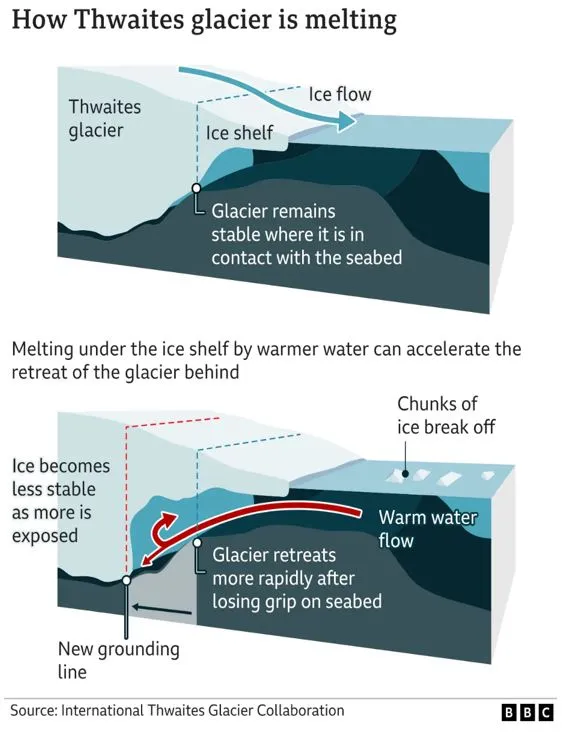

9th August 2024 (7 Topics)
Context
For the second time in two years, a record-breaking heatwave is sweeping through Antarctica at the height of its winter season. Ground temperatures have been 10 degrees Celsius higher than normal on average since mid-July, and up to 28 degrees higher on certain days.
About ‘Antarctica’ Heatwave:
- In June, the extent of Antarctic Sea ice was the second-lowest ever for that time of year — a little more than the extent recorded in June 2023, the lowest ever.
- The 2024 Antarctica heat wave refers to a prolonged and significant mid-winter increase in Antarctic temperatures compared to prior winters, causing several regions of Antarctica to reach temperatures 10 °C (18.0 °F) above normal in July 2024, up to a 28 °C (50.4 °F) increase above average.
Fact Check:
|
Why Antarctica Heatwave is dangerous?
- Due to the presence of ice caps: In parts of East Antarctica, the relatively higher-elevation swathe that makes up two-thirds of the world’s coldest continent, temperatures are currently in the range of minus 25 degrees to minus 30 degrees Celsius.
- Deep-winter temperatures here usually vary between minus 50 degrees and minus 60 degrees Celsius.
- Melting of Ice: Sea ice plays a crucial role in keeping temperatures down in the polar regions, as its bright, white surface reflects more sunlight (solar energy) to space than liquid water.
- Sea ice also ensures that the air remains cool by acting as a barrier between the cold air and the relatively warmer water below.
- Rising sea level: A sea level rise of only a few feet will displace the roughly 230 million people who live within about 3 feet of the high tide line today, according to a report by the environmental organization Antarctic and Southern Ocean Coalition.
- Disturbance in global ocean circulation: Rising temperatures will also impact the global ocean circulation system, which regulates climate by storing and transporting heat, carbon, nutrients, and freshwater around the world.
What are the reasons for these heat waves?
- Weakening of Polar vortex: Scientists believe that the higher temperatures are mainly a consequence of the weakening of the polar vortex, the band of cold air and low-pressure systems that spins around the poles of the Earth in the stratosphere.
- The vortex usually remains strong and stable during winter in the southern hemisphere — keeping cold air trapped over Antarctica and not letting hot air come in — but it has been disturbed this year by large-scale atmospheric waves (periodic disturbances in the fields of atmospheric variables).
- Warmer air travel from other continents: Due to this, the vortex released trapped cold air, and opened the door for warmer air to enter the region. As this warmer air travelled downwards from the upper atmosphere, it caused an increase in temperatures.
More Articles


